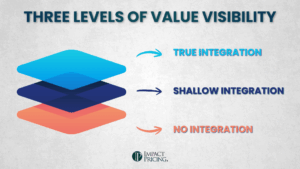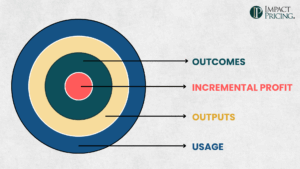You can listen to the full audio version of this blog we call — Blogcast.
I’ve been struggling to understand the difference between the Jobs to Be Done (JTBD) framework and my own approach of thinking in terms of problems and results.
At first glance, they seem interchangeable. Both aim to explain why buyers make decisions. But here’s one possible explanation that finally helped clarify the distinction for me:
JTBD frames buyer behavior as hiring a product to make progress. Problems and results focus on what’s broken and what outcome the buyer wants.
The classic JTBD example goes something like this:
“When I’m commuting and haven’t had breakfast, I hire a banana because it’s quick, portable, and filling.”
That’s a clean way to describe the job the banana performs.
Now here’s the same situation through the lens of problems and results:
Problem: I often leave the house without eating. Arriving at work hungry makes me less productive, but I don’t want a mess in my car.
Result: I feel full when I arrive at work, without cleaning crumbs off my seat.
Both explain the same behavior. But when I apply this thinking to business features, especially in B2B, I find that problems and results are easier to identify and more directly tied to pricing, urgency, and messaging.
Take Single Sign-On (SSO) for example.
It’s tough to write a clean JTBD line here. Maybe:
“When my company grows and we’re using many SaaS tools, I hire SSO to simplify access and reduce login frustration.”
That’s fine, but here’s the same idea using problems and results:
Problem: Managing dozens of logins creates a security risk, overwhelms IT, and frustrates employees.
Result: Centralized authentication, fewer password reset tickets, faster onboarding/offboarding, stronger compliance.
That list of problems and results speaks directly to economic impact and decision criteria. Results are measured in KPIs. This aligns naturally with pricing, product packaging, and segmentation.
Maybe JTBD and problems/results are just different languages for the same thing. But for me, one feels more usable in everyday business conversations.
I’m not an expert in JTBD, so I’d love to hear your take. How do you think about JTBD compared to other frameworks? Where have you found it useful or not?
Share your comments on the LinkedIn post.
Now, go make an impact!
 Tags: b2b, pricing, pricing foundations, pricing metrics, pricing skills, pricing strategy, pricing value, value
Tags: b2b, pricing, pricing foundations, pricing metrics, pricing skills, pricing strategy, pricing value, value













